Regarding the additive manufacturing processes of “powder feeding” and “wire feeding”, our usual impression is of large-scale industrial-grade manufacturing equipment, which is usually very expensive, and its processing size is limited by the equipment itself. So is there a new way to allow the processing size itself to break through the limitation, but to ensure the processing accuracy and quality to a certain extent?
German Federal Ministry of Education and Research (BMBF) The ProLMD funded project proved the feasibility of robot + powder material laser deposition/wire laser deposition.Depend onFraunhofer ILTThe additive manufacturing technology developed by the Fraunhofer Laser Institute adopts a modular design and can be cost-effectively integrated into the company’s existing production line with robotic hands.
Incorporating Dr. Helmut Bossy from the German Federal Ministry of Education and Research (BMBF), Günter Neumann from KUKA Industries, Professor Johannes Henrich Schleifenbaum from the Fraunhofer ILT Fraunhofer Laser Institute, Karlsruhe Institute of Technology (KIT) The views of Stefan Scherr, four project participants to share the advantages of this modular solution with Guyou.
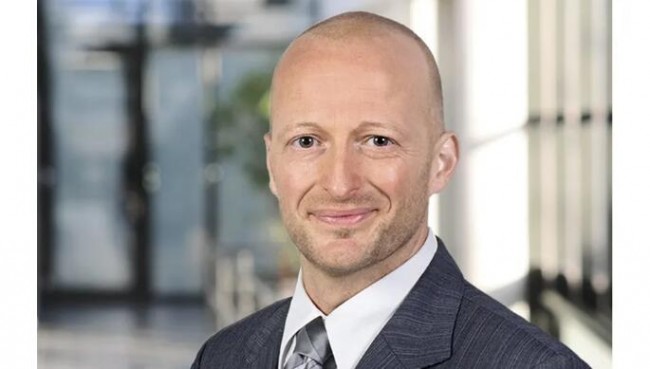 Prof. Johannes Henrich Schleifenbaum (Aachen Fraunhofer Institute of Laser TechnologyILTDirector of Additive Manufacturing, Chairman of the DAP Academy of Digital Additive Manufacturing at RWTH Aachen University,ACAMPresident of Additive Manufacturing Center Aachen)
Prof. Johannes Henrich Schleifenbaum (Aachen Fraunhofer Institute of Laser TechnologyILTDirector of Additive Manufacturing, Chairman of the DAP Academy of Digital Additive Manufacturing at RWTH Aachen University,ACAMPresident of Additive Manufacturing Center Aachen)
Robot system with LMD processing head and integrated line laser scanner, the robot can process and realize complex geometric shapes almost without any restrictions. Source: Fraunhofer ILT
![]() Additive manufacturing without expensive investment
Additive manufacturing without expensive investment
According to Dr. Helmut Bossy, the ProLMD project was different from the beginning, according toFraunhofer ILTThe results of cooperation with the application field can quickly realize local laser deposition additive manufacturing on large-area parts. The fusion of the two methods is innovative: powder material laser deposition and wire laser deposition.
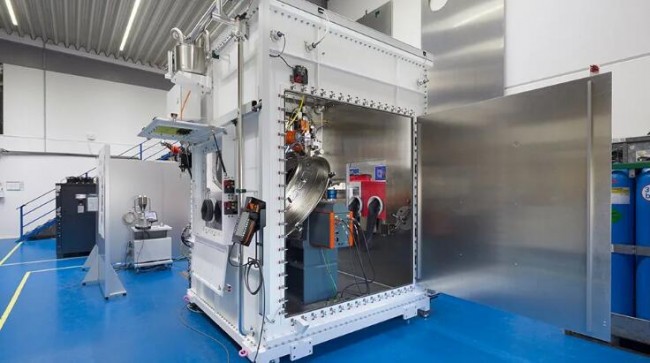 Modular laser metal deposition technology developed by Fraunhofer. Source: Fraunhofer
Modular laser metal deposition technology developed by Fraunhofer. Source: Fraunhofer
Through Fraunhofer ILT, deepen the scientific understanding of powder material laser deposition and metal wire laser deposition process, and make necessary improvements to the cladding device. In an industrial manufacturing environment, it is necessary to perform cladding operations by robots in a controlled atmosphere, and use non-contact measurement technology to ensure quality. Fraunhofer ILT has deep development experience in processing technology and quality control to develop modular solutions. This is specifically designed for mid-sized companies, making the additive manufacturing process usability and ease of handling a big step forward.
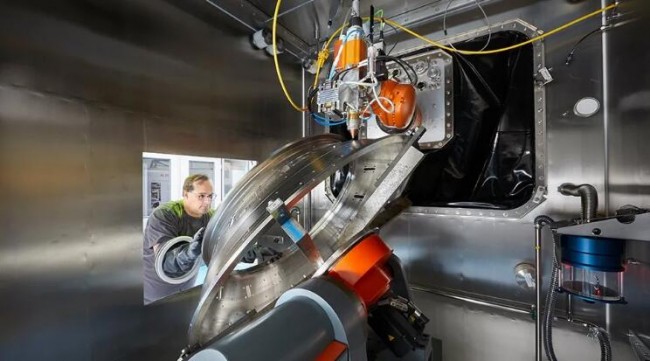 Modular laser metal deposition technology developed by Fraunhofer. Source: Fraunhofer
Modular laser metal deposition technology developed by Fraunhofer. Source: Fraunhofer
The cooperation with KUKA originated in 2015. KUKA took over Reis Lasertec in Würselen near Fraunhofer ILT in Aachen to further expand its market influence. Therefore, KUKA regards additive manufacturing as the target market and is trying to set a new standard for its robotics technology. KUKA hopes to make the entire additive manufacturing solution cheaper and develop standardized robotic cells. Currently in Würselen, KUKA has built a complete robotic arm-based additive manufacturing system. The KUKA robot + laser deposition technology solution is expected to become a more economical additive manufacturing solution.
Modular laser metal deposition technology developed by Fraunhofer. Source: Fraunhofer
According to Professor Johannes Henrich Schleifenbaum of Fraunhofer ILT (Aachen Fraunhofer Institute for Laser TechnologyFraunhofer ILTDirector of Additive Manufacturing, Chairman of the DAP Academy of Digital Additive Manufacturing at RWTH Aachen University,ACAMAachen Additive Manufacturing Center President), Fraunhofer ILT is the first research institute in Germany to comprehensively promote the development of digital additive manufacturing (AM) industry applications.
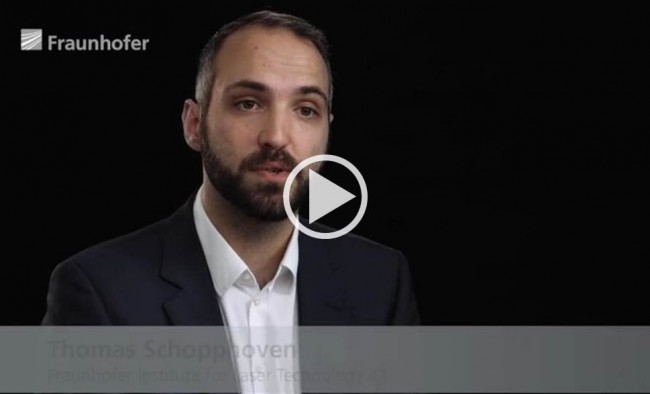
Ultra-high-speed laser metal deposition technology developed by Fraunhofer. Source: Fraunhofer
Although the technology of LMD laser metal deposition is well-known in the field of coatings, it is still a relatively young technology in the field of additive manufacturing. This technology has many advantages because only by providing materials locally, you can make more Large parts.
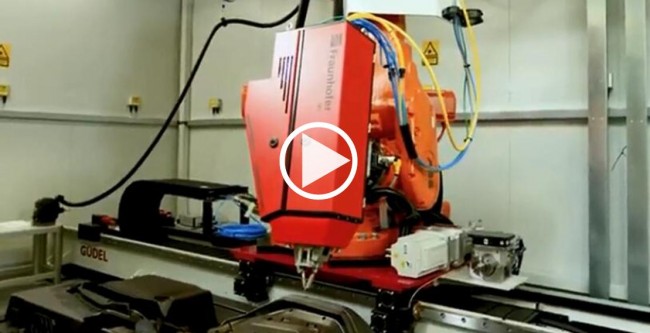
Metal wire laser deposition technology developed by Fraunhofer. Source: Fraunhofer
At present, additive manufacturing is usually very expensive compared to traditional casting or other forming processes. Now, the ProLMD project allows the process to be used in production quickly and inexpensively, and it can also be seamlessly integrated into the existing process chain.
Modular laser metal deposition technology developed by Fraunhofer. Source: Fraunhofer
Considering the importance of seamless connection, Fraunhofer ILT covers the entire process chain. Built-in sensors can detect typical errors that occur during operation, so these errors can be analyzed during processing, and the equipment’s control system compensates for errors. Fraunhofer also developed CAD/CAM software to control the layer-by-layer construction process of materials.
The ProLMD project demonstrated that all functions of powder material laser deposition/metal wire laser deposition can be combined with a robotic arm, so that additive manufacturing can be carried out without any problems. The next step of this combination is to provide medium-sized companies with full Azimuth hassle-free additive manufacturing package or standard unit.
![]() Aachen-Explore the complex mysteries of additive manufacturing
Aachen-Explore the complex mysteries of additive manufacturing
Aachen is the cradle of the birth of metal additive manufacturing. If the industry looks back on history, the industry will see that from 1995 onwards, from hybrid manufacturing, to the birth of patents for selective laser melting technology SLM, to mold application development, implant application development Wait, Fraunhofer of Aachen has been pushing the boundaries of additive manufacturing.
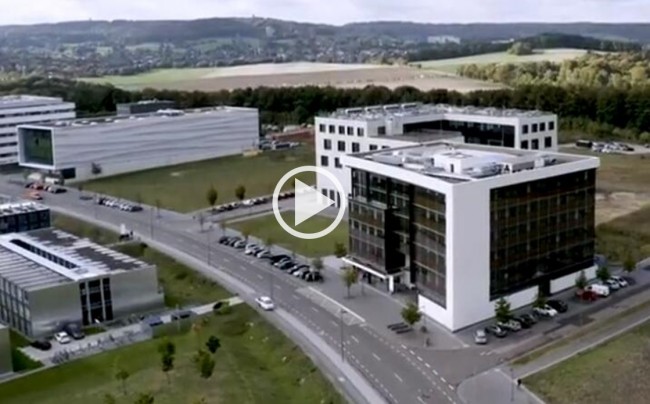 For the navigation of complex additive manufacturing, in the video, the dual president of ACAM, Professor Schleifenbaum, is from Fraunhofer ILT and the chairman of the DAP Faculty of RWTH Aachen University, and Dr. Arntz is from Fraunhofer IPT. Source: ACAM
For the navigation of complex additive manufacturing, in the video, the dual president of ACAM, Professor Schleifenbaum, is from Fraunhofer ILT and the chairman of the DAP Faculty of RWTH Aachen University, and Dr. Arntz is from Fraunhofer IPT. Source: ACAM
There are particularly many scientific research institutions here in Aachen. Different institutions are engaged in research in different directions. Some focus on software development, some focus on material development, and some focus on process development… These rich and complex research capabilities require a center. Neural portal to sort out and connect to the outside world, ACAM was born under this background.
On one side is the cross-industry and diverse scientific research capabilities, on the other side are the needs of different enterprises in the industry.Proceeding from the attraction of scientific research to the industry, ACAM has created an industrial network. The industrial network of ACAM’s consortium is still expanding. Basically, it contains some internationally well-known companies. One type of company has already used it.3D printingTechnology, they are here to seek the improvement of competitiveness, there is a type of enterprise that is ready to apply3D printingTechnology, they are here to seek technical entry points and interfaces.
(Editor in charge: admin)


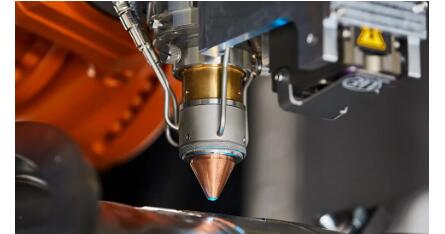
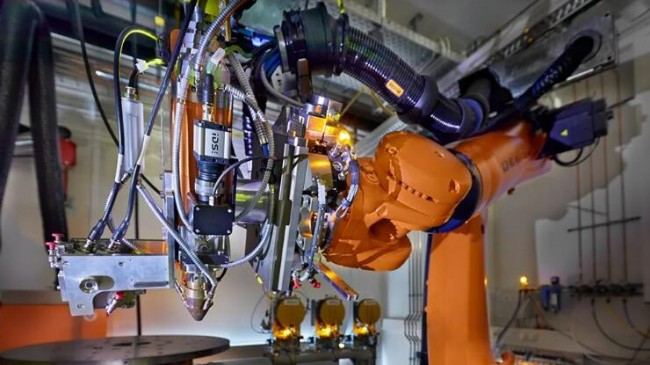
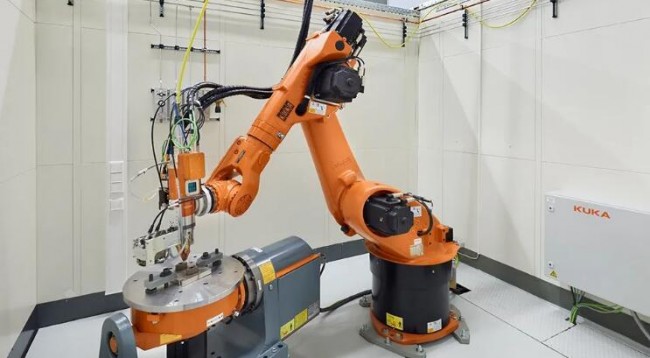
0 Comments for “KUKA robot + laser deposition, Fraunhofer ILT creates modular additive manufacturing solutions”